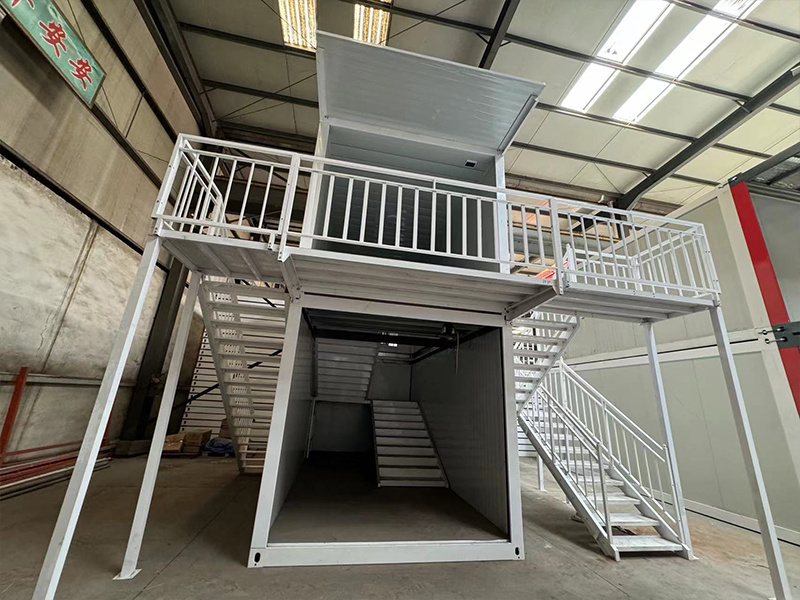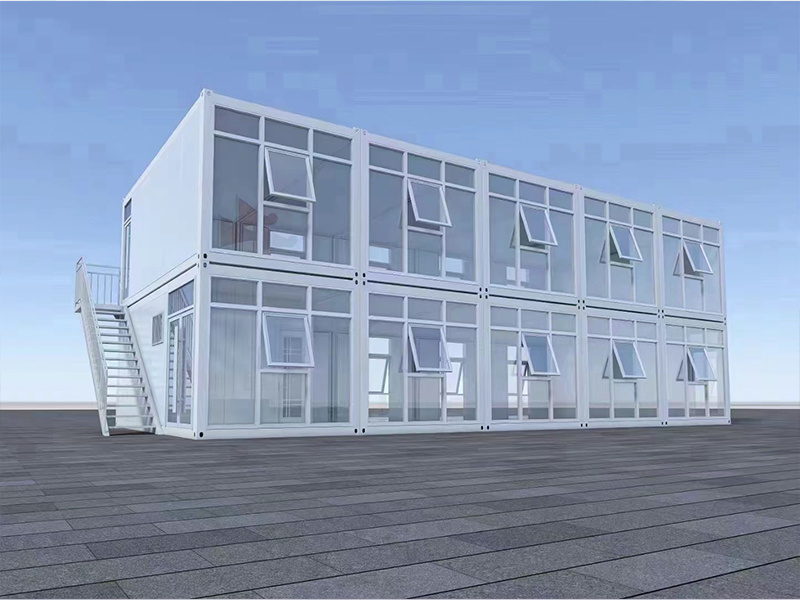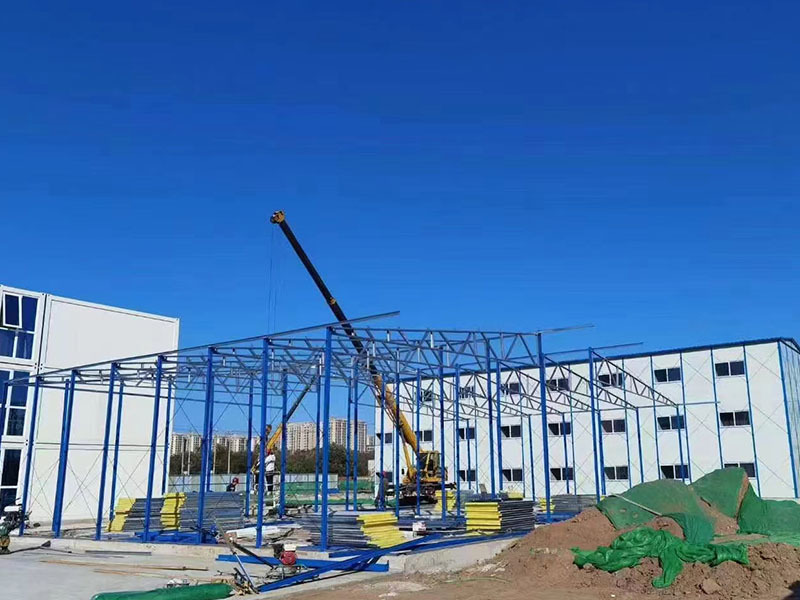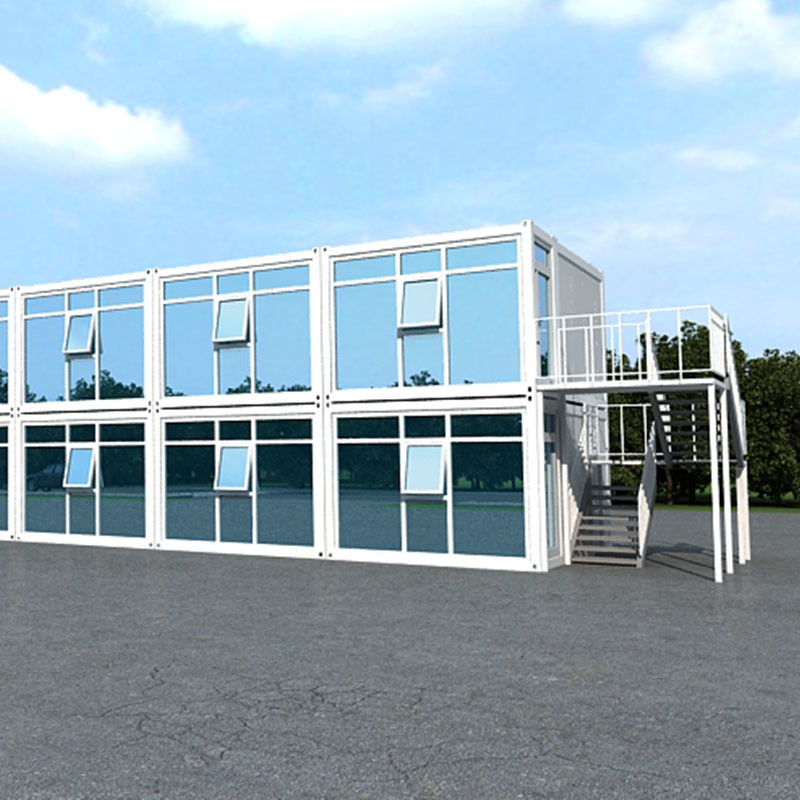The Benefits of Energy Efficiency in Temporary Construction Housing
Release Time:
Jul 04,2025
The Benefits of Energy Efficiency in Temporary Construction Housing Introduction to Temporary Construction Housing Temporary construction housing serves as a crucial solution in a variety of scenarios, including disaster relief, remote workforce accommodation, and rapid deployment of facilities. As the demand for temporary structures increases, so does the necessity for energy efficiency within th
The Benefits of Energy Efficiency in Temporary Construction Housing
Introduction to Temporary Construction Housing
Temporary construction housing serves as a crucial solution in a variety of scenarios, including disaster relief, remote workforce accommodation, and rapid deployment of facilities. As the demand for temporary structures increases, so does the necessity for energy efficiency within these buildings. Energy-efficient temporary housing not only addresses urgent housing needs but also promotes sustainability and reduces overall costs.
Understanding Energy Efficiency in Construction
Energy efficiency refers to the use of technology and practices designed to minimize energy consumption while maintaining the same level of comfort and utility. In the context of temporary construction housing, this can involve:
- Utilizing energy-efficient appliances
- Implementing effective insulation
- Designing for natural light
- Employing renewable energy sources
Why Energy Efficiency Matters
The importance of energy efficiency in temporary construction housing cannot be overstated. Below are several key reasons why prioritizing energy-efficient practices is essential:
Cost Savings
Investing in energy-efficient materials and systems can lead to substantial cost savings over time. Lower energy bills mean that funds can be allocated to other important areas, such as maintenance and upgrades.
Environmental Impact
Temporary housing often arises in response to urgent needs, such as natural disasters. Implementing energy-efficient designs can help minimize the environmental footprint associated with these structures. Reducing energy consumption decreases greenhouse gas emissions and conserves natural resources, contributing positively to the planet.
Enhanced Comfort for Occupants
Energy efficiency directly impacts the comfort of occupants. Well-insulated spaces with effective heating and cooling systems create a more pleasant living environment. Moreover, utilizing natural light reduces the reliance on artificial lighting, further enhancing the experience for residents.
Key Strategies for Energy Efficiency in Temporary Housing
To achieve energy efficiency in temporary construction housing, various strategies can be employed. Here, we delve into the most effective approaches.
1. Choosing Sustainable Materials
The selection of building materials plays a critical role in energy efficiency. Sustainable materials, such as recycled steel, bamboo, and straw bales, not only reduce energy consumption during their production but also provide excellent insulation properties.
2. Effective Insulation Solutions
Proper insulation is vital in maintaining temperature control within temporary structures. Using advanced insulation materials, such as spray foam or rigid foam boards, can significantly reduce heat loss in winter and heat gain in summer.
3. Innovative Energy Systems
Integrating renewable energy sources, such as solar panels or wind turbines, can drastically reduce reliance on traditional energy sources. Temporary structures can be equipped with portable solar generators to provide clean energy on-site.
4. Smart Design Principles
Architectural design can greatly influence energy efficiency. Orientation of the building can maximize natural light and minimize heat gain. Open floor plans allow for better air circulation, while strategically placed windows can enhance natural ventilation.
5. Energy-Efficient Appliances and Lighting
Equipping temporary housing with energy-efficient appliances can lower energy consumption significantly. Choosing LED lighting over traditional incandescent bulbs not only reduces energy usage but also extends the lifespan of lighting fixtures.
Case Studies of Energy-Efficient Temporary Housing
Examining real-life examples of energy-efficient temporary construction housing can illustrate the benefits and effectiveness of these strategies.
Case Study 1: Modular Temporary Housing for Disaster Relief
In the aftermath of natural disasters, modular housing units can be quickly deployed. One such project utilized recycled shipping containers retrofitted with insulation and solar panels. This approach provided immediate shelter while minimizing environmental impact.
Case Study 2: Remote Workforce Camps
For remote work sites, a mining company implemented temporary housing equipped with energy-efficient systems. By utilizing advanced insulation and water-saving fixtures, the company not only reduced operational costs but also improved employee satisfaction.
The Regulatory Landscape for Energy Efficiency in Construction
Understanding the regulations surrounding energy efficiency is crucial for those involved in the construction industry. Various local and national codes dictate the minimum standards for energy efficiency in building projects.
1. Building Codes and Standards
Familiarizing oneself with the International Energy Conservation Code (IECC) and other local standards helps ensure compliance, maximizing energy-saving potential.
2. Incentives for Energy-Efficient Building
Governments often provide incentives for incorporating energy-efficient designs. These can include tax credits, grants, or low-interest loans aimed at promoting sustainability in construction.
Future Trends in Energy Efficiency for Temporary Construction Housing
As technology advances, the future of energy efficiency in temporary construction housing is promising. Innovations such as smart building technology, which allows for real-time monitoring and management of energy use, will play a crucial role.
1. Smart Home Integration
The incorporation of IoT devices can help monitor energy consumption patterns, allowing for more informed decisions that enhance efficiency.
2. 3D Printing Technology
3D printing offers opportunities for creating energy-efficient building materials on-site. This technology not only reduces waste but can also speed up construction times.
Challenges to Implementing Energy Efficiency
Despite the clear benefits, there are challenges to implementing energy-efficient practices in temporary construction housing.
1. Initial Cost Considerations
While energy-efficient solutions yield long-term savings, the initial investment can be a barrier for some projects. It’s crucial to analyze the return on investment for various energy-efficient options.
2. Short-Term Nature of Temporary Housing
The transient nature of temporary housing can lead to reluctance in investing in energy-efficient technologies. However, emphasizing long-term benefits and potential savings can counteract this argument.
FAQs About Energy Efficiency in Temporary Housing
1. What are the primary benefits of energy efficiency in temporary construction housing?
Energy efficiency in temporary housing leads to cost savings, reduced environmental impact, and enhanced occupant comfort.
2. How can I make temporary housing more energy-efficient?
Consider using sustainable materials, effective insulation, renewable energy sources, and energy-efficient appliances and lighting.
3. Are there specific building codes for energy efficiency in temporary housing?
Yes, various local and national building codes, such as the IECC, set minimum energy efficiency standards.
4. What role do renewable energy sources play in temporary construction housing?
Renewable energy sources, such as solar panels, can significantly reduce dependency on traditional energy sources and lower overall energy costs.
5. How can technology enhance energy efficiency in temporary housing?
Smart building technology and IoT devices can help monitor and manage energy consumption, optimizing efficiency in real-time.
Conclusion
Energy efficiency in temporary construction housing is not just a passing trend; it’s a necessary evolution in the construction industry. By investing in energy-efficient materials, embracing sustainable practices, and prioritizing occupant comfort, we can create a better future for temporary housing. The benefits extend beyond immediate cost savings; they encompass environmental stewardship and enhanced living conditions for those in need. As we move forward, it is imperative to embrace energy efficiency not only as a goal but as a standard practice within the construction landscape. The future of temporary housing is bright, sustainable, and energy-efficient.
Key words:
What Else Might You Learn?











